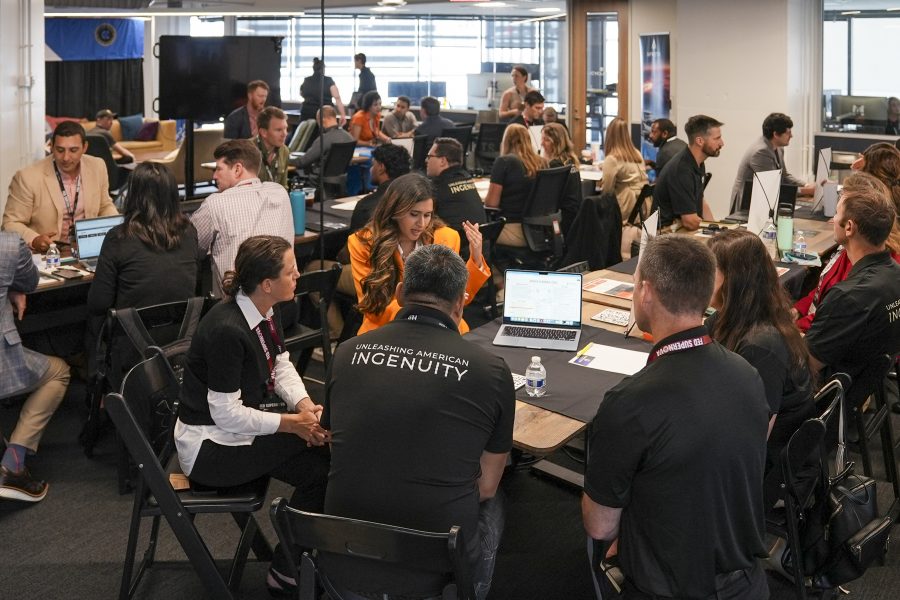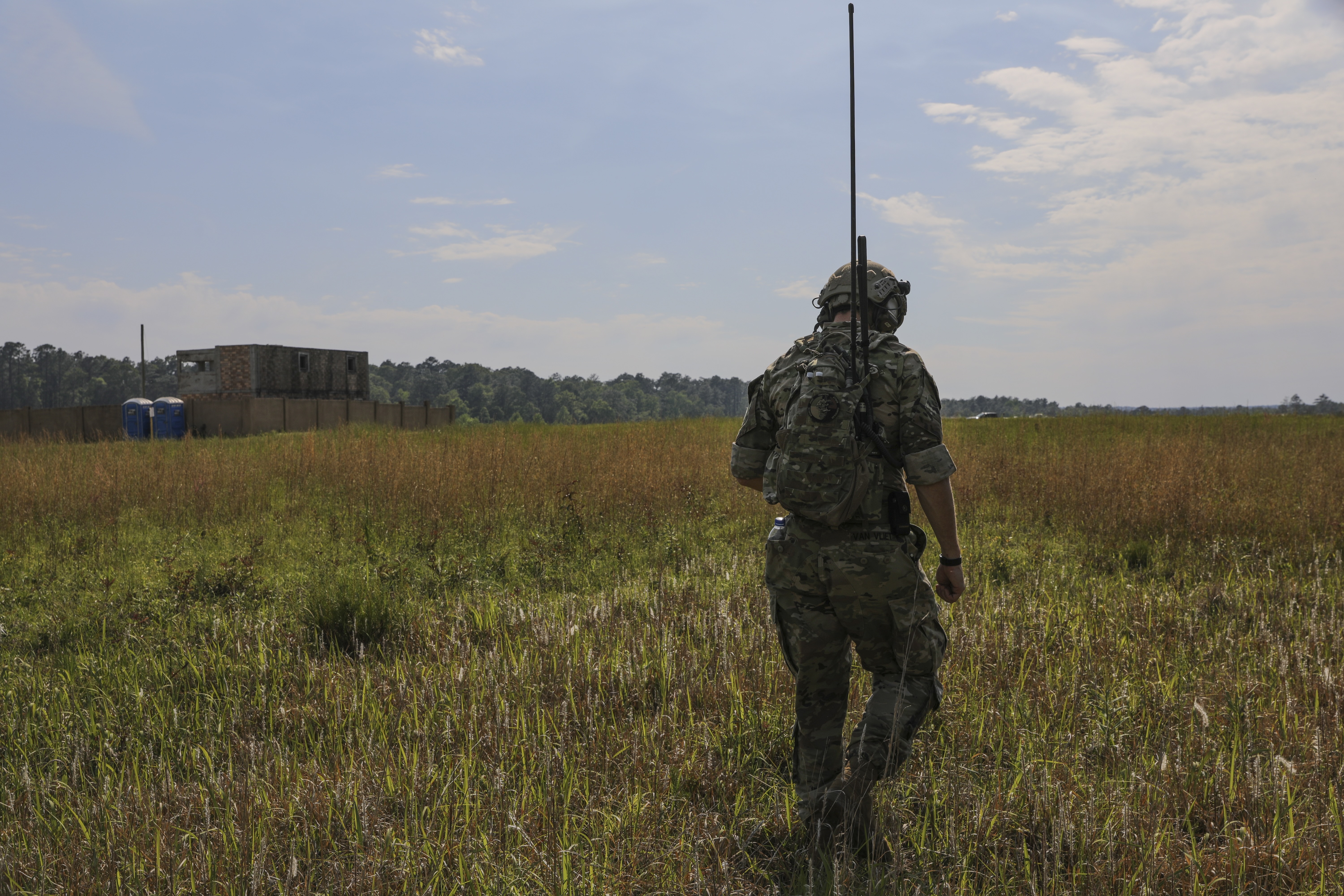
The $4.26 billion Small Business Innovation Research (SBIR) contracting program widely used by the Air Force went into hibernation as the government shut down Oct. 1, but unless lawmakers strike a deal on reforms, the program could reach an abrupt end.
Sen. Joni Ernst, the Iowa Republican chair of the Senate Small Business Committee, wants reforms to the SBIR and Small Business Technology Transfer Research (STTR) programs, but negotiations on her proposed changes and a competing reform package stalled. Ernst has blocked a reauthorization of the program, and without a solution, the program will not restart when the government reopens.
The government created SBIR/STTR in 1982 to tap into new ideas from small businesses at the dawn of the microcomputer era.
More than 40 years later, the SBIR/STTR program has grown to include $4.26 billion in contracts across the federal sector, with almost 54 percent of that coming from the Department of Defense. The Air Force alone accounts for 7,364 of some 13,906 DOD contracts under the program, or almost 53 percent.
The biggest users include the Air Force Research Laboratory, AFWERX, the Air Force Life Cycle Management Center, and the Air Force Nuclear Weapons Center.
Impasse
But Ernst sees flaws in the SBIR program and wants major changes. In remarks on the Senate floor, Ernst argued some companies have become SBIR “mills,” churning through Phase I and II contracts without ever producing anything useful. She also charges that bigger companies have grown adept at tapping the program for resources.
“Too many large companies—not truly small businesses—drain millions of taxpayer dollars by churning out white papers, … instead of turning the taxpayer’s investments into reality,” she said.
To block such abuses, Ernst wants to impose lifetime caps on Phase I and II funding, so no company can ever receive more than $75 million in total early stage SBIR money.
Ernst’s plan is backed by the Alliance for Commercial Technology in Government, which represents venture capital-backed tech startups. The group argues that capping the total companies can earn would “broaden the appeal of the program to the commercial innovation ecosystem, a community that historically has avoided the defense market, but one that our national defense can no longer do without.”
Ernst has also expressed concern about links between the Chinese government and some SBIR grant recipients. Her proposed bill, the Investing in National Next-Generation Opportunities for Venture Acceleration and Technological Excellence, or INNOVATE, Act, mandates public records checks and other measures to weed them out.
But Jere Glover, executive director of the Small Business Technology Council, a trade association that represents companies involved in the SBIR program, argues those measures duplicate existing checks and balances in the system.
“The DOD already has procedures in place—published, recognized, effective procedures—to address these very real risks,” Glover said. “What Sen. Ernst’s bill says is do a Google search, effectively, and if any Chinese names come up,” the proposal is in jeopardy.
Glover said a 2022 measure already took aim at SBIR mills.
When that measure was being debated as part of the 2022 SBIR/STTR reauthorization, then-DOD innovation chief Under Secretary of Defense for Research and Engineering Heidi Shyu acknowledged challenges, but said the program was delivering value to the military.
“Phase I award winners require sustained investment in order to cross the valley of death and be integrated into programs of record or fielded systems,” she said. “Most successful Phase III companies received multiple Phase I and II awards.”
Supporters of the programs say enhanced commercialization benchmarks are fine, but there’s debate about how to measure them. And they generally oppose lifetime caps, especially if they are retroactive, saying that would punish companies who operated in good faith in the past, unaware of future limits.
Ernst has said she would rather kill the program, returning the funds to agencies’ main R&D account rather than reauthorize an unchanged SBIR/STTR program.
Ernst’s office declined an interview with Air & Space Forces Magazine, but a spokesperson said the senator “is committed to ensuring that taxpayer investments in research and development do not benefit China and actually deliver for our warfighters. The status quo is unacceptable and without necessary reforms, these set-aside dollars may be better off restored to agencies’ research and development budgets for agency priorities.”
Bipartisan Backing
The standoff over SBIR contracts caught many by surprise, as it is a long-running program with bipartisan backing.
“It’s not a Democrat versus Republican thing … There are multiple reform bills,” Wiliams said.
While some Republicans, like House Small Business Committee chair Rep. Roger Williams (R-Texas), supported simply extending the bill, others have also proposed reforms.
By issuing broad calls for needed new capabilities and breaking development up into three phases, advocates say, SBIR contracts enable military buyers to make a large number of small bets on cutting-edge technologies:
- Phase I: Awards run from under $100,000 to more than $300,000 and the deliverable is typically a technical white paper.
- Phase II: The most successful contenders from Phase I can earn awards up to $2 million and are expected to prototype their technology.
- Phase III: Follow-on contracts for production or further R&D that can run to hundreds of millions of dollars.
“The beauty of the SBIR program is you can sprinkle small amounts of money with Phase Is to a lot of companies with a lot of different ideas, as opposed to going to a prime [contractor] that typically already has one solution they’re invested in,” said John Williams, who ran SBIR/STTR programs first for the Navy and now works for the SBIR Consortium, a trade advocacy group.
Agencies with research and development budgets exceeding $100 million are required under law to set aside 3.2 percent of their external R&D contract funds for SBIR contracts. If the SBIR program lapses, those funds could be tapped for other work.
Innovation Pipeline
Among the 4,000 small companies winning SBIR/STTR deals each year, about one in four are new to government contracting, according to the National Small Business Association. Every dollar of SBIR funding generates on average between $22-$33 of private sector or non-SBIR government investment, NSBA says.
Many SBIR developments find their way into programs of record, said Bill Marinelli, president and chief executive officer of Physical Sciences Inc., a 52-year-old battery and sensor maker.
SBIR was the gateway for the company into other businesses. “It’s hard to imagine much that’s done here at this point that doesn’t have its origins in SBIR one way or another,” he said. “It’s where the ideas come from.”
The program lets innovative smaller companies see an idea through, from concept to prototyping and production, he said, and to retain its intellectual property through that process. That’s true even for those SBIR contracts where the company didn’t get a Phase III production award.
PSI often ends up as a subcontractor or supplier of SBIR-developed technology to a big prime contractor, Marinelli said, or licensing technology commercially or to a defense prime. “So a lot of our business, even though it’s [a follow-on] from SBIR, never gets described as Phase III. … If you were to go in and look at how much Phase III funding we got, you wouldn’t see very much. But you also wouldn’t see all the subcontracts we’re getting from defense primes as we provide material to them.”
A DOD study concluded that advanced manufacturing techniques developed by the SBIR program had saved or avoided “well over $500 million in lifecycle costs” for the F-35.
PSI is developing new techniques for the manufacture of ceramic composites needed for hypersonic flight, Marinelli said, and SBIR contracts helped jumpstart that process.
“That’s where the impact is: To develop and mature … technology to the point where they’re willing to put it in a [weapons] platform,” Marinelli said. “And that’s where the country and the defense industrial base are going to lose” if the program goes away.
The post SBIR Contracts, On Hold During Shutdown, Face Long-Term Risk appeared first on Air & Space Forces Magazine.

Rapid Acquisition & Sustainment, Technology, AFRL, AFWERX, Air Force Research Laboratory, SBIR, SBIR/STTR, Sen. Joni Ernst, small business innovation research, Small Business Technology Transfer
Air & Space Forces Magazine
Bitcoin
Ethereum
Monero

Donate Bitcoin to The Bitstream
Scan the QR code or copy the address below into your wallet to send some Bitcoin to The Bitstream

Donate Ethereum to The Bitstream
Scan the QR code or copy the address below into your wallet to send some Ethereum to The Bitstream

Donate Monero to The Bitstream
Scan the QR code or copy the address below into your wallet to send some Monero to The Bitstream
Donate Via Wallets
Select a wallet to accept donation in ETH BNB BUSD etc..











